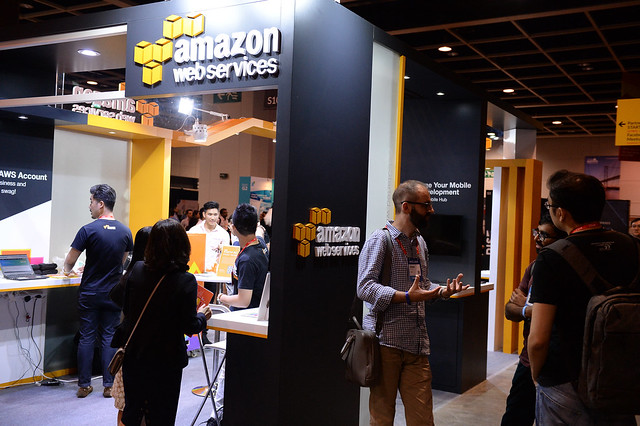The integration between on-premises datacenters and one or more public clouds is what we now call a hybrid cloud setup. As opposed to multicloud, which involves multiple public clouds without any on-premises datacenters infrastructure in the mix, hybrid clouds offer its users the ability to keep sensitive or “high-priority” data on-premises. Hybrid cloud setups are becoming increasingly popular in both the finance and health-care sectors as both these sectors have quite specific regulations around security and privacy, as well as zero tolerance for latency issues. Imagine a lagging computer on a stock market floor or in an emergency room of a hospital. Sounds scary, but it’s never going to happen because there are regulations in place that keep important stuff like that on-premises. That doesn’t mean that banks and hospitals don’t want all that other good stuff that comes from the cloud though, like GPU instances or AI and deep-learning-powered services that recognize speech and images.
Bridging the gap
Cost is also a major factor that drives organizations toward a hybrid setup, especially when variable workloads are involved. A hybrid setup lets you use your regular on-premises datacenters infrastructure to handle normal workloads and switch to public clouds for “cloud bursts.” This is no easy feat, however, and is certainly more complicated than running a multicloud setup. This is because the different cloud and on-premises resources not only use different APIs and management interfaces but are often based on completely different technologies that were never meant to integrate with each other. In fact, according to a research study by DataCenterKnowledge, one of the most common problems with hybrid cloud adoption is getting legacy applications to work alongside modern cloud-native ones. Patching the two together always comes at a performance cost and when we’re talking about business-critical applications, that isn’t really an option for organizations that have thousands of customers depending on them.
While there are a number of advantages to this hybrid model such as flexible usage-based pricing models, almost zero setup cost, and on-demand access to virtually unlimited resources, getting it all to work together is still a work in progress. This means that even though a large number of organizations have adopted this setup and are using it efficiently, there isn’t really a one-size-fits-all or “foolproof” solution to the problem yet. Several platforms help you get there, however, and even some new ones that are quite promising with regards to supporting a truly hybrid infrastructure. This means supporting as many integration scenarios as possible since hybrid clouds typically encompass quite an assortment of hardware, operating systems, and APIs. This is where the platforms come in and try to make it all easier to manage, preferably with a single control pane for both your on-premises datacenters and your public clouds.
AWS Outposts

Outposts was released by Amazon Web Services in November 2018 as part of a major push toward making the hybrid cloud feasible. As opposed to making software that’s compatible with your on-premises equipment, AWS goes old-school here and gives you new on-premises equipment that’s compatible with its cloud. These are delivered to your datacenters in the form of preconfigured racks where AWS services can be run just as they would in the cloud. In addition to being fully managed by AWS and able to run legacy apps in a cloud-native manner, Outposts also allows you to keep AWS services like compute and storage on-premises. Though this method works well since you’re effectively swapping out all your hardware and software for AWS compatible stuff, a complete datacenter “lock-in” isn’t a tempting offer for everyone. Since a big part of what the hybrid cloud represents is freedom and options, buying hardware managed by AWS limits both.
Azure Stack
Unlike Outposts where you need to buy hardware from AWS, Azure Stack is like an extension of Azure that you can use on standard equipment available from several vendors. While it will even run on your old hardware, it’s advised to use those environments for testing as they probably won’t give you production-level performance. For those on a tight budget, some vendors offer pricing models where you pay per month for the resources you use. There’s also more specific equipment available like Azure Stack HCI for hyperconverged architectures and Azure Data Box Edge for edge devices. Azure Stack not only lets you use Azure’s APIs to interact with both cloud and on-premises resources but also Azure’s powerful tools that help manage, monitor, and secure them. Since it runs on the same code as Azure, it also automatically sets up and abstracts away all infrastructural complexities, much like it would in the cloud.
Google Cloud Anthos
Earlier this year, Google announced Anthos, a Kubernetes-based open platform that lets you run apps anywhere and on virtually anything using what are known as open APIs. In addition to the fact that it doesn’t require you to modify your legacy apps to run them on-prem or in the cloud, it’s also 100 percent software-based. This means you don’t have to buy any new equipment whatsoever and can use your existing on-prem hardware without any custom upgrades or add-ons. Anthos is built around Google’s Cloud Services Platform and has an on-premises version of Google Kubernetes Engine (GKE) called GKE On-Prem that you can run in your datacenter. This includes all the code and container deployments that are built around GKE, including support for Istio service mesh and Knative serverless computing. Additionally, Anthos also extends its environment to other third-party clouds like AWS and Azure, giving you one control pane to manage pretty much everything.
Rackspace
After achieving limited success as a public cloud, Rackspace recently rebranded and refocused itself on “customer-centric” hybrid cloud management, and things are definitely looking up. In addition to doing the needful and allowing its customers to run any application across public, private, or hybrid cloud environments, Rackspace goes an extra few miles and does a lot more. Rackspace recently announced a bunch of new hybrid cloud services, one of which is called Reliability Service Block. This is a chance for customers to get in touch with Rackspace’s own team of engineers and use their experience and expertise to systematically plan the move to cloud-native technologies. Other interesting new capabilities include Kubernetes support, container support, managed guest operating systems, and data integration. Rackspace also now comes with integration and API management assessment that helps customers continuously evaluate and improve on the current state of affairs.
With Forester’s now-famous 74 percent hybrid cloud prediction, it’s no secret that all the big players are doing everything in their means to make hybrid clouds easy to manage and operate. This also brings into focus the fact that not everyone is at liberty to move 100 percent to the cloud and that organizations have different priorities when it comes to what they are willing to sacrifice for performance. Lastly, on-premises is not going anywhere and there are even custom-tailored solutions focused on complying to standards like Huawei’s Azure Stack, Fujitsu’s hybrid cloud, and Hitachi Data Systems. All these platforms are geared toward hybrid cloud architecture and it mostly remains a matter of how much data you need to leave on your on-premises datacenters and how much you can afford to offload to the cloud.
Other vendors offer more tailored solutions, such as Fujitsu Hybrid Cloud Services, which combines Fujitsu’s private cloud services with Microsoft Azure. The Japanese telecom company NTT offers hybrid cloud solutions focused on compliance with HIPAA, FISMA, and PCI regulations. Hitachi Data Systems offers customized cloud storage and computing offerings and is a gold member of OpenStack. HPE Composable Cloud aims to ease hybrid cloud deployments by providing a unified API for IT automation.
Featured image: Pixabay




